I woke up in the middle of the night to the sound of heavy rain, flashes of lightning and long, rolling thunder. According to one of the locals they had 20ml of rain overnight which they were very happy about. By morning, the storm had gone, leaving behind some grey clouds and a much cooler day.
The car of one of the other people staying at our motel had broken down in the night and the car was parked right across the middle of the motel car park. Jocelyn had to do some fancy manoeuvering to get us out and on our way to our first tour of the day, the Underground Mine. Being of a certain age, we all remember being taught in Social Studies lessons as children that copper, silver, lead and zinc are mined at Mount Isa.
Apparently they used to do tours of the working mine but for health and safety reasons this was stopped a few years ago. The local mayor was concerned that there would be nothing for tourists to do out here so he organised a group of volunteers to dig a replica mine that the tourists would be able to visit. It seemed real enough to us even though we only went down about 20m underground and not the 1.
9 km that the real miners do. We got to don the hard hat, overalls and boots and travel underground in the wire cage lift. Ian, the retired miner, who conducted the tour was very thorough and explained the process very well in layman’s terms. The mine had lots of the machinery scattered about the mine and Ian was very good at explaining their uses. It was a very interesting look at a day in the life of a miner. Morning tea of pasties in the miners’ crib was also pretty good! The crib is their break room and where they go when the explosive charges are about to be set off.
During World War II, after the bombing of Darwin, Mount Isa was very concerned that they could be next on the Japanese invasion plans. They prepared for an attack by digging out tunnels and setting them up with everything needed for an emergency hospital. It was close enough to the hospital that they could get patients underground quickly in an emergency but far enough away from the hospital that if it was attacked, the shelter wouldn’t be damaged.
It was never called upon to be used, fortunately, but they did apparently have weekly drills to make sure it was possible, if needed. Sometimes they would take pregnant or new mothers to rest in the shelter because the temperature was cooler than outside. After the war the tunnels deteriorated and fell into disrepair for many years until archaeologists from the Queensland University came and excavated there a few years ago. They found intact cabinets with equipment and medicines still untouched. Now restored and safe once more it’s become another place to visit on the tourist circuit here in Mount Isa.
As a young lad of 13 years old, Dad lived with his parents and brother and sisters here in Mount Isa for a year or so before he was sent off to boarding school in Charters Towers. He has an amazing memory of what it was like when he lived here. Considering he is now 92 years old that was almost 80 years ago. He remembers that there were only three real houses in the town at the time, one of which was his family home. His father was the local magistrate and worked at the courthouse. The other houses in Mount Isa at the time were made from canvas and corrugated iron. The old house is long gone but with the help of a kindly gentleman at the Tourist Information Centre (Who was very impressed with dad’s memory!) we were able to interpret his mud map and find where the old house used to be. It’s now a solicitors office. There is a courthouse still across the street, however, it’s a newer version than the one that Dad would remember.
These days everywhere you go in Mt Isa the skyline is dominated by the huge smokestacks. The lead smelter smokestack is the tallest one at 270 metres high. They say the height takes the fumes up into the upper atmosphere and not over the town. The candy striped red and white one, produces sulpha dioxide from the copper smelter. It’s 155 metres tall. They certainly are visible from most parts of town. One of the things that surprised us most about Mount Isa is how close the mine is to the centre of town.
We took a barbecued chicken and some salad out to Lake Moondarra this evening to watch the sunset and to enjoy the cool after the rain. We had ducks and pelican swimming in the lake in front of us and peacocks parading around behind us.
We’ve driven over 2000 kms on this journey so far, all on Highway A2. Tomorrow we deviate onto a new highway as we head towards our next stop, Richmond.

 Mount Isa, Queensland, Australia
Mount Isa, Queensland, Australia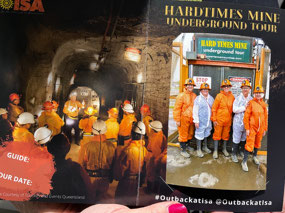
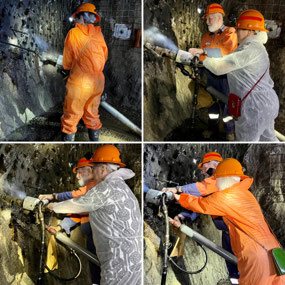
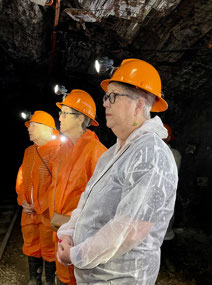

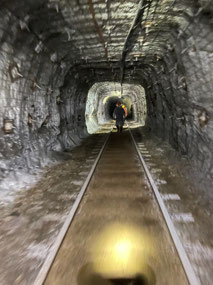
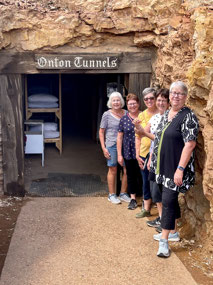
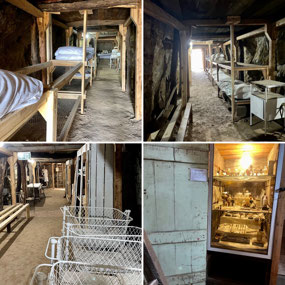
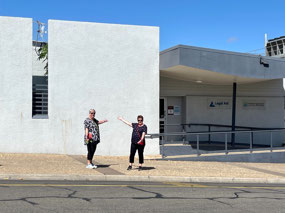
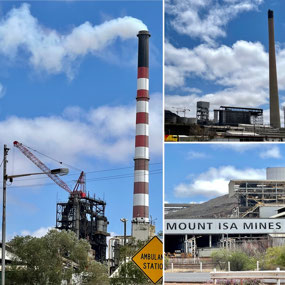
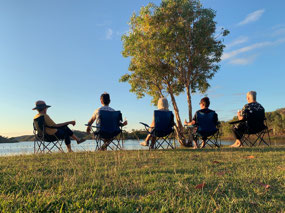
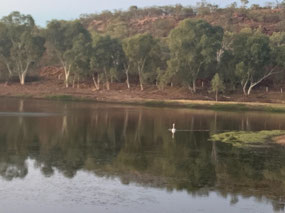
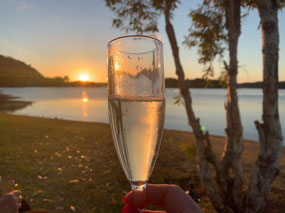
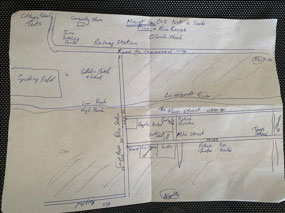
Marl
2021-09-02
Very interesting read, Lan.
Kathryn
2021-09-02
Mt.Isa seems to have changed somewhat since I was there in 1971/72. You're tempting me to do the road trip soon. Great travel diary Leanne.
Beth
2021-09-02
Found it fascinating to read about your dad's Mt Isa childhood experience, Leanne. That glass of vino (or bubbles) in the final photo looks very inviting.
leanneroles
2021-09-02
I forgot you were here for a while, Kathryn. We could have checked out your old home, too!
Jenny
2021-09-02
This was a different kind of day for you all….thanks for sharing, Leanne…x
Karry
2021-09-02
That underground hospital looks a lot cleaner then when we were there n
Ingrid
2021-09-03
When we visited Mt Isa years and years ago, we went out to the dam and all around the creeks and rivers there were signs not to drink or swim in the water it was so polluted. Has that changed now?
Suzanne
2021-09-03
Another place I need to visit. Great photos and how wonderful to be able to go under ground.
Jen
2021-09-04
Fascinating. Also impressed with your dad's memory!
leanneroles
2021-09-05
There seemed to be lots of water sports, Ingrid so I guess so. There were signs warning of duck lice however!!